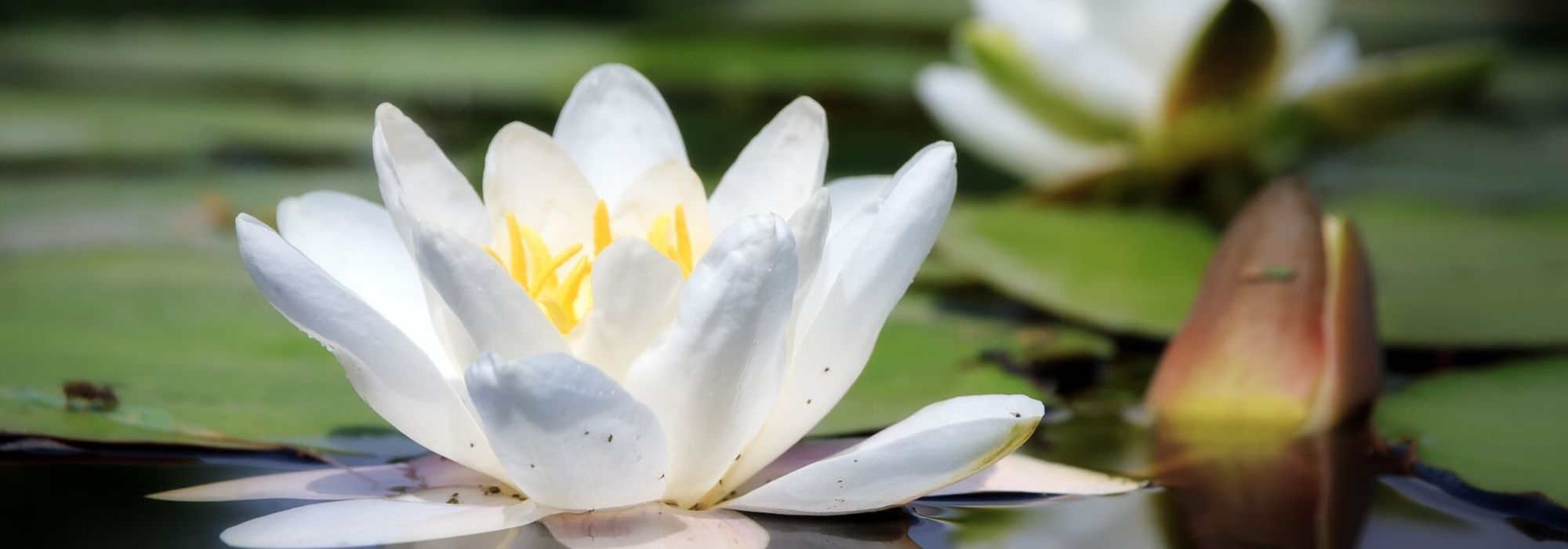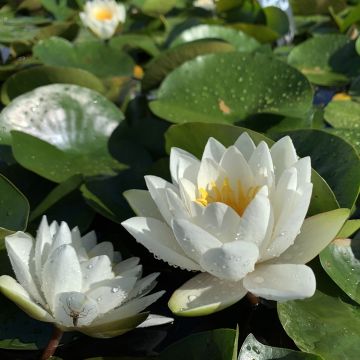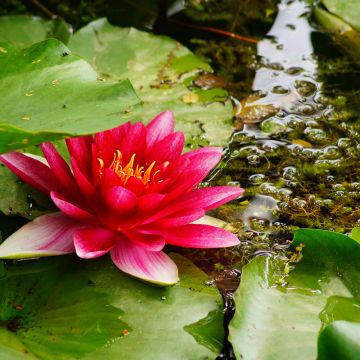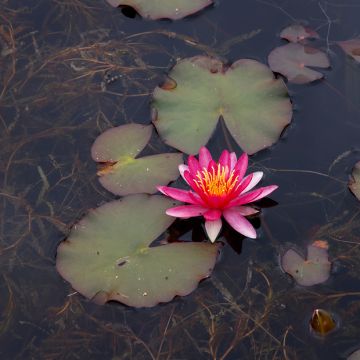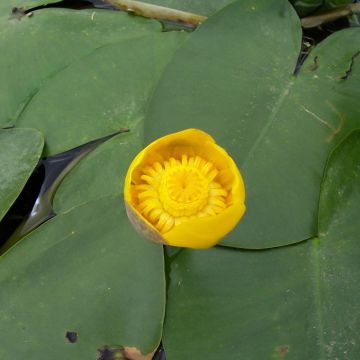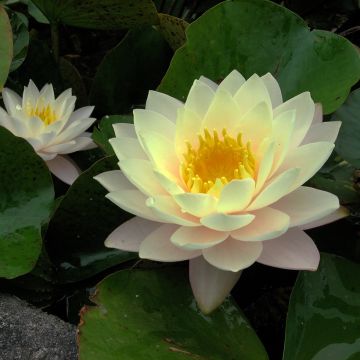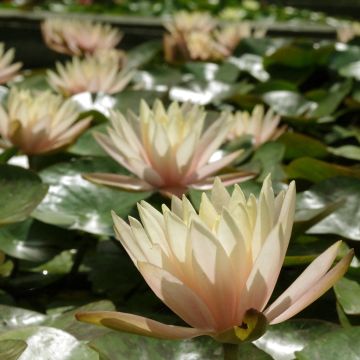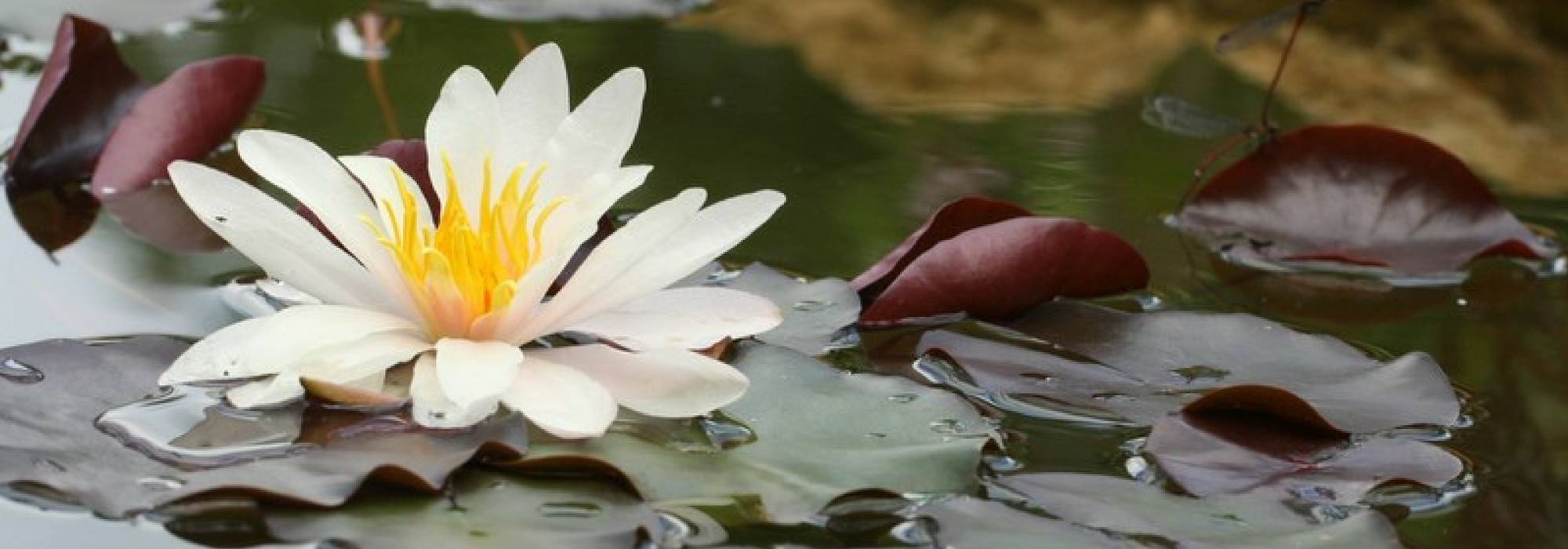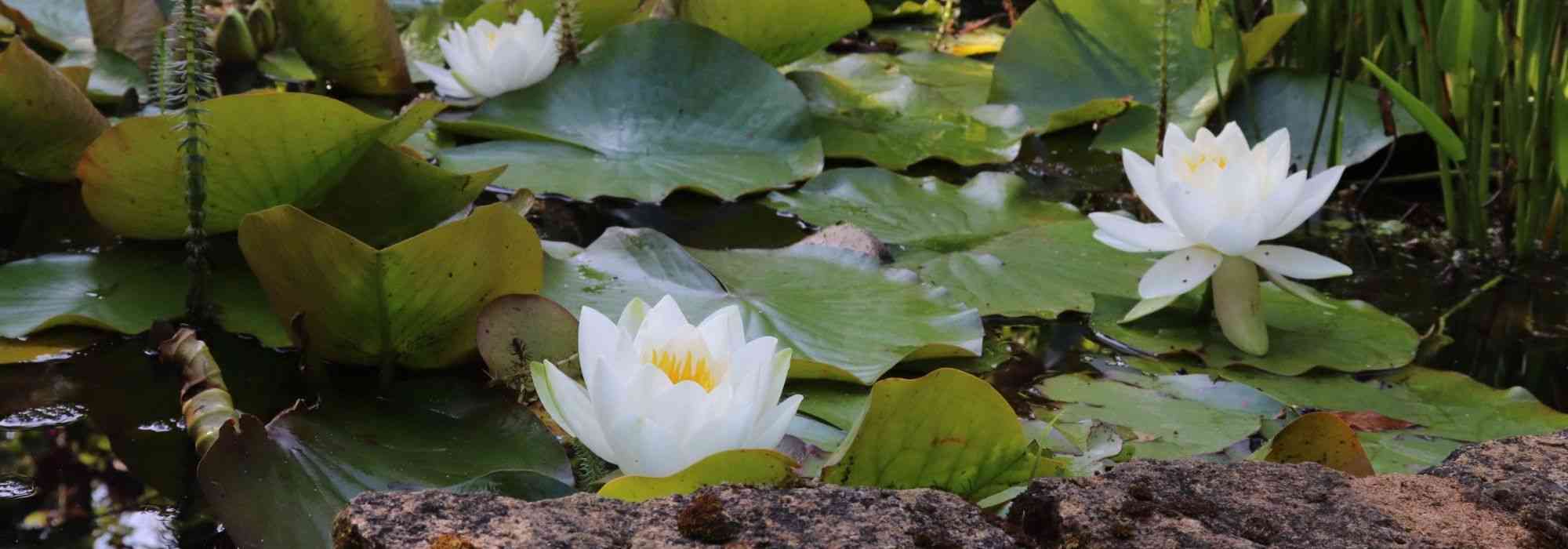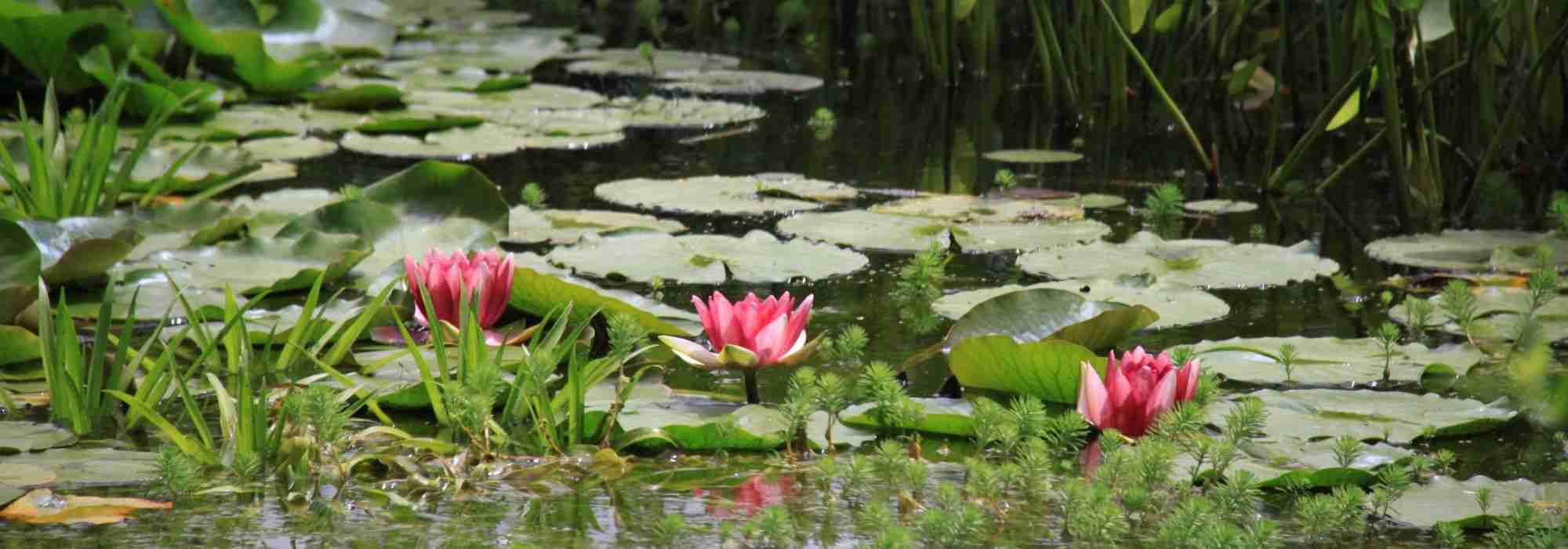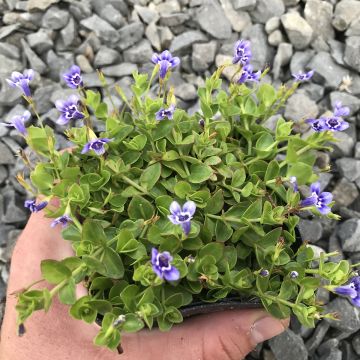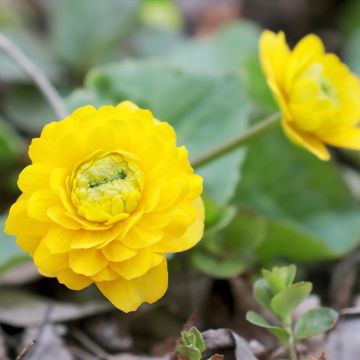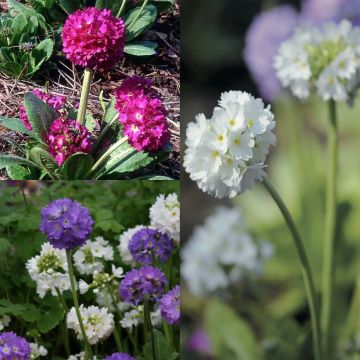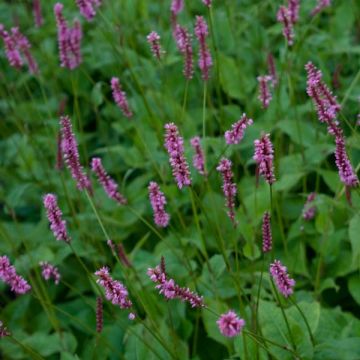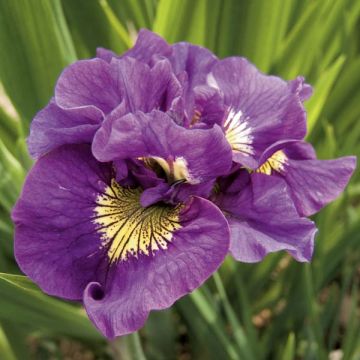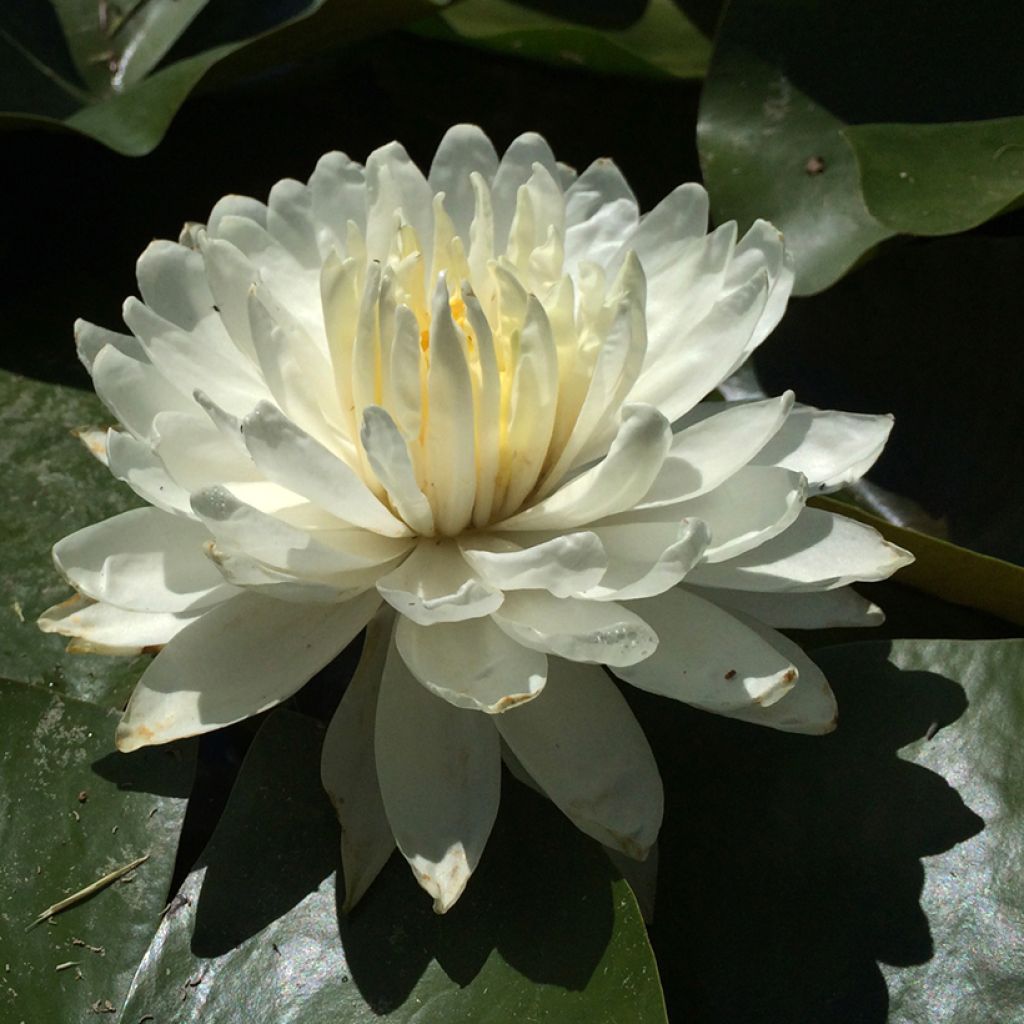

Nymphaea White 1000 Petals - Water lily
Nymphaea White 1000 Petals - Water lily
Nymphaea White 1000 Petals
Water Lily, Waterlily
Special offer!
Receive a €20 voucher for any order over €90 (excluding delivery costs, credit notes, and plastic-free options)!
1- Add your favorite plants to your cart.
2- Once you have reached €90, confirm your order (you can even choose the delivery date!).
3- As soon as your order is shipped, you will receive an email containing your voucher code, valid for 3 months (90 days).
Your voucher is unique and can only be used once, for any order with a minimum value of €20, excluding delivery costs.
Can be combined with other current offers, non-divisible and non-refundable.
Home or relay delivery (depending on size and destination)
Schedule delivery date,
and select date in basket
This plant carries a 6 months recovery warranty
More information
We guarantee the quality of our plants for a full growing cycle, and will replace at our expense any plant that fails to recover under normal climatic and planting conditions.
Description
The Nymphaea 'White 1000 Petals' is a water lily of very large development, unique for its white flowers, filled with 130 to 150 petals. Its flowers are extraordinary, perfectly highlighted by large round leaves of a beautiful olive green. This lovely plant needs little time, space, and flowers; it is reserved for collectors who own large ponds! The rhizome of this water lily should ideally be planted at a depth between 40 and 70 cm.
The hybrid water lily 'White 1000 Petals' is a horticultural creation by Perry D. Slocum (Perry's Water Gardens, USA) dating back to 1991. It is a perennial with deciduous foliage belonging to the Nymphaeaceae family. Starting from spring, this plant develops numerous floating leaves measuring up to 25 cm in diameter in a mature plant. The leaves are almost round, and their sinus is nearly closed. Their colour is a uniform olive green. The particularly vigorous plant spreads over 1.50 m and up to 2 m. The flowering, which is not very abundant, usually begins in June and continues until September. The double flowers measure 14 to 17 cm in diameter and open on the water's surface. Their petals are white, and the stamens and the centre are yellow. These corollas open during the day and close in the evening. Each flower lives for 4 to 5 days before wilting; the flower returns underwater, and another replaces it. The flowering is followed by the formation of fruits containing numerous seeds. The fruit ripens underwater and releases floating seeds that eventually sink and germinate in the mud. Water lilies are hardy as long as their rhizome does not freeze in winter. Make sure that the water does not freeze at the depth where they are planted.
Choose varieties of water lilies that are easy, hardy, and floriferous, and above all, those that have a size proportionate to your pond. Water lilies are among the most beautiful perennial pond plants with their perfectly shaped flowers. Most of them bloom for long weeks until the beginning of autumn. The water lily is an essential aquatic plant for the proper balance of a garden pond, as it contributes to the oxygenation of the water. Its leaves floating on the water's surface will provide shade and shelter for your fish, protecting them from predatory insects such as aphids.
The genus name comes from the Greek nymphaia and the Latin name nymphaea, which means "water lily". The nymphs of Greek and Latin mythology inspired them. Nymphaea bears flowers that are sometimes diurnal, sometimes nocturnal, and occasionally fragrant.
Flowering
Foliage
Plant habit
Botanical data
Nymphaea
White 1000 Petals
Nymphaeaceae
Water Lily, Waterlily
Cultivar or hybrid
Other Aquatic perennials
View all →Planting and care
The rhizome of the 'White 1000 Petals' water lily should be planted from March to June at a depth of 40 to 70 cm. Plant the rhizomes of hardy water lilies in good garden soil, rich in clay or silt and free from stones (never use horticultural compost, as it is too rich and promotes algae growth). Give them the sunniest spot in the water feature. Space each rhizome at least 1 m apart and plant them by inserting them vertically into the soil up to the collar. In the case of a natural water feature (pond or lake), ensure that the water level remains relatively stable and that the water is neither too acidic nor too alkaline (desired pH between 6.5 and 7.5).
The rhizomes can be planted in a wicker basket or a fine mesh basket that is sunk in the desired location. For classic hardy water lilies, use a pot with a diameter of 40 cm (wider than it is tall). If the bottom is muddy, attach a stone to the rhizome and throw the whole thing to the desired location. Never leave the Nymphaea rhizomes exposed to the sun or air to prevent them from drying out; plant them as soon as you receive or purchase them.
If you have fish in your pond, it is preferable to spread a thick layer of large gravel on the surface of the planted pot to discourage them from digging in the soil and thus fouling the water. Water lilies' growth will be optimal if they are planted in containers suitable for their growth.
Water lilies are hungry plants: distribute a balanced slow-release fertiliser at planting and then every year at the beginning of the growing season (for example, Osmocote 10-11-18-2 with a duration of 5-6 months). During the summer, remove any leaves that grow in excessive numbers in the centre of the clump, leaving only the most vigorous ones. Also, remove any yellowed or stained leaves and emerging aquatic "weeds."
Planting period
Intended location
Care
Planting & care advice
This item has not been reviewed yet - be the first to leave a review about it.
Similar products
Haven't found what you were looking for?
Hardiness is the lowest winter temperature a plant can endure without suffering serious damage or even dying. However, hardiness is affected by location (a sheltered area, such as a patio), protection (winter cover) and soil type (hardiness is improved by well-drained soil).

Photo Sharing Terms & Conditions
In order to encourage gardeners to interact and share their experiences, Promesse de fleurs offers various media enabling content to be uploaded onto its Site - in particular via the ‘Photo sharing’ module.
The User agrees to refrain from:
- Posting any content that is illegal, prejudicial, insulting, racist, inciteful to hatred, revisionist, contrary to public decency, that infringes on privacy or on the privacy rights of third parties, in particular the publicity rights of persons and goods, intellectual property rights, or the right to privacy.
- Submitting content on behalf of a third party;
- Impersonate the identity of a third party and/or publish any personal information about a third party;
In general, the User undertakes to refrain from any unethical behaviour.
All Content (in particular text, comments, files, images, photos, videos, creative works, etc.), which may be subject to property or intellectual property rights, image or other private rights, shall remain the property of the User, subject to the limited rights granted by the terms of the licence granted by Promesse de fleurs as stated below. Users are at liberty to publish or not to publish such Content on the Site, notably via the ‘Photo Sharing’ facility, and accept that this Content shall be made public and freely accessible, notably on the Internet.
Users further acknowledge, undertake to have ,and guarantee that they hold all necessary rights and permissions to publish such material on the Site, in particular with regard to the legislation in force pertaining to any privacy, property, intellectual property, image, or contractual rights, or rights of any other nature. By publishing such Content on the Site, Users acknowledge accepting full liability as publishers of the Content within the meaning of the law, and grant Promesse de fleurs, free of charge, an inclusive, worldwide licence for the said Content for the entire duration of its publication, including all reproduction, representation, up/downloading, displaying, performing, transmission, and storage rights.
Users also grant permission for their name to be linked to the Content and accept that this link may not always be made available.
By engaging in posting material, Users consent to their Content becoming automatically accessible on the Internet, in particular on other sites and/or blogs and/or web pages of the Promesse de fleurs site, including in particular social pages and the Promesse de fleurs catalogue.
Users may secure the removal of entrusted content free of charge by issuing a simple request via our contact form.
The flowering period indicated on our website applies to countries and regions located in USDA zone 8 (France, the United Kingdom, Ireland, the Netherlands, etc.)
It will vary according to where you live:
- In zones 9 to 10 (Italy, Spain, Greece, etc.), flowering will occur about 2 to 4 weeks earlier.
- In zones 6 to 7 (Germany, Poland, Slovenia, and lower mountainous regions), flowering will be delayed by 2 to 3 weeks.
- In zone 5 (Central Europe, Scandinavia), blooming will be delayed by 3 to 5 weeks.
In temperate climates, pruning of spring-flowering shrubs (forsythia, spireas, etc.) should be done just after flowering.
Pruning of summer-flowering shrubs (Indian Lilac, Perovskia, etc.) can be done in winter or spring.
In cold regions as well as with frost-sensitive plants, avoid pruning too early when severe frosts may still occur.
The planting period indicated on our website applies to countries and regions located in USDA zone 8 (France, United Kingdom, Ireland, Netherlands).
It will vary according to where you live:
- In Mediterranean zones (Marseille, Madrid, Milan, etc.), autumn and winter are the best planting periods.
- In continental zones (Strasbourg, Munich, Vienna, etc.), delay planting by 2 to 3 weeks in spring and bring it forward by 2 to 4 weeks in autumn.
- In mountainous regions (the Alps, Pyrenees, Carpathians, etc.), it is best to plant in late spring (May-June) or late summer (August-September).
The harvesting period indicated on our website applies to countries and regions in USDA zone 8 (France, England, Ireland, the Netherlands).
In colder areas (Scandinavia, Poland, Austria...) fruit and vegetable harvests are likely to be delayed by 3-4 weeks.
In warmer areas (Italy, Spain, Greece, etc.), harvesting will probably take place earlier, depending on weather conditions.
The sowing periods indicated on our website apply to countries and regions within USDA Zone 8 (France, UK, Ireland, Netherlands).
In colder areas (Scandinavia, Poland, Austria...), delay any outdoor sowing by 3-4 weeks, or sow under glass.
In warmer climes (Italy, Spain, Greece, etc.), bring outdoor sowing forward by a few weeks.






























